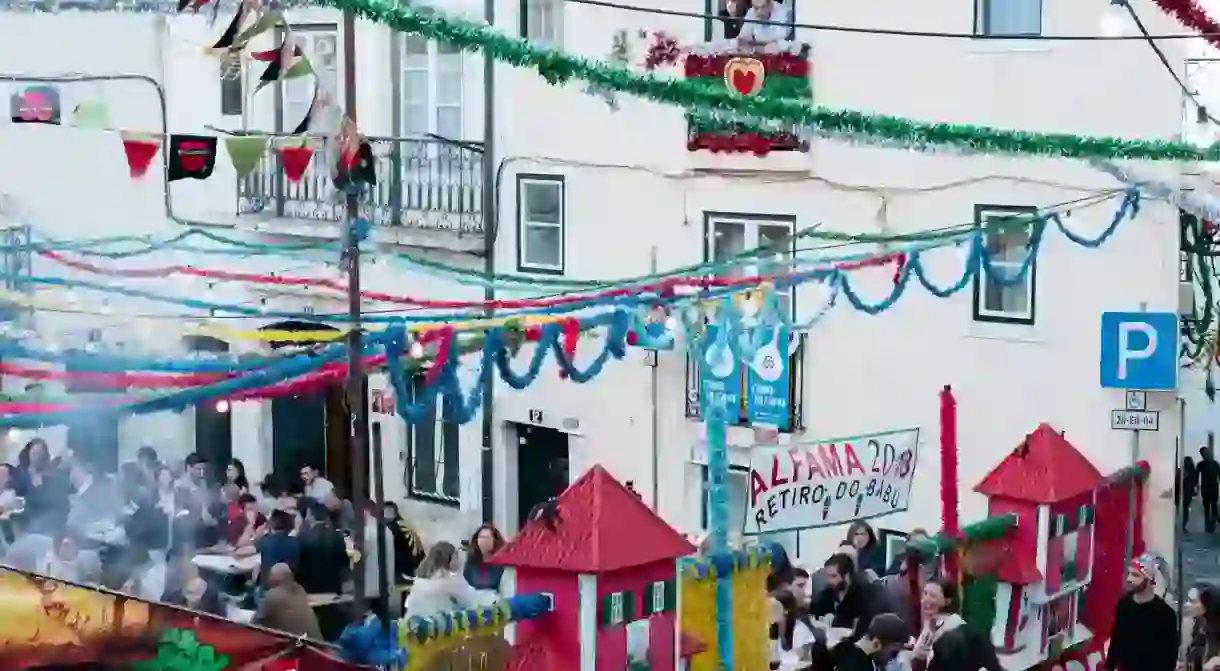A Glimpse Into the Santo António Festival

By early afternoon on June 12th, uptempo folk music and the smoky scent of grilled sardines find their way into Lisbon’s apartment windows, drawing the city’s residents into the streets. Though the entire month of June feels like one big party in Portugal, June 12th and 13th hold a special place in the hearts of Lisbon’s locals—these are the days for the biggest street party of the year, the Santo António Festival.
The narrow, cobbled, and sloping streets of Lisbon’s historic neighborhoods become a bit cozier as business owners set up grills and tables; it doesn’t take long for the parties to get started. The main events that kick off these two days are the parade on Avenida da Liberdade, a colorful march down the wide avenue of the city’s fashion district, and the Casamentos de Santo António, during which multiple couples get married at once in Lisbon’s Sé Cathedral.







The Santo António Festival is one part of Portugal’s Festas dos Santos Populares, a month-long set of parties that mix pagan practices and religious celebrations. Santo António, a Franciscan monk who was born in Lisbon during the 12th century, is known as the patron saint of lost items, but locally, he is also known as the saint of love and marriages.


The first weddings of Santo António began in the late 1950s as a way of giving couples on a budget the opportunity to marry. The weddings stopped after the Carnation Revolution of 1974 and the fall of Portugal’s dictatorship but started again by the end of the 1990s.

Newly married couples are not the only people who are celebrated—singles are too, and gifting a small pot of basil to your “special someone” is a popular way to hint that you’re interested. It won’t be hard to find basil for sale but a popular place to buy it is in front of the Santo António Church near Alfama.



Lisbon’s colorful streets burst with even more hues, from the flower-covered walls to the street ornaments, green basil (with colorful love notes sticking out), and the parade dancers’ costumes. Music, dancing, and an array of traditional food carry those in the streets well into the night and into the next morning. In addition to sardines with bread, traditional sausages are cooked on grills and locals can be seen snacking on caracóis (small snails) while drinking beer or wine and socializing.


The busiest and most popular neighborhoods are Alfama and Graça, though you’re bound to have fun regardless of where you end up. Why not start planning now to attend next year’s events?























